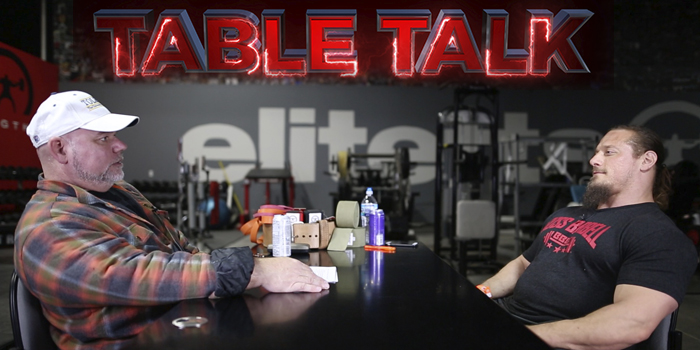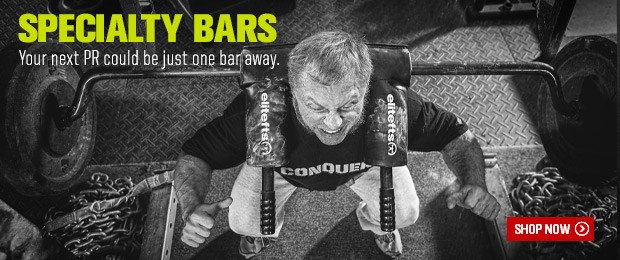
If you're tired of squatting and deadlifting but still want to build those lifts, you could add the SS Yoke Bar to your training and use it for many, many exercise variations. Or you could start doing good mornings to build both lifts. For today's Table Talk, the second in this series with Dan Green, Dave and Dan respond to a question about safety squat bars and good mornings:
"How often do you incorporate safety squat bars and good mornings in your programming?
Dan begins by sharing that his preference is to squat with a straight bar twice a week, but lately he's made a bit of a change to that. In his current program, every other week he'll use the SS Yoke Bar for squats and good mornings. He likes this approach for two reasons. First, although the SS Yoke Bar doesn't do much for his squat (because it is limited by back strength, which means for Dan it doesn't hit his legs hard enough) it's great for building his deadlift. The manner in which Dan performs SS Yoke Bar squats is with his back somewhat "caved in", which puts him in a position more similar to his deadlift and is great for building the lower, middle, and upper back. Second, using the SS Yoke Bar every other week helps save his shoulders and elbows from the wear and tear they'd experience with a straight bar.
Dave points out that during his time at Westside, he predominantly used the safety squat bar to build the deadlift, which leads to his follow-up question for Dan: does he perform the SS Yoke Bar squats in his squat stance or his deadlift stance? Dan's response is that he usually uses a stance similar to his normal squat. During his first training cycle using this method, he was training his sumo deadlift for the meet. It worked and really brought his sumo deadlift up (to 881 in training), but he suffered an injury before the meet. Now during his current training cycle, he's deadlifting conventional. Staying in a normal squat stance for the SS Yoke Bar squats has been working well to build his conventional deadlift as well.
For the good mornings, Dan keeps his feet roughly two feet apart, which is based on the feeling in his hamstrings during the movement. This is what feels most comfortable and hits his hamstrings the way he likes best. Regarding his back position, he says he begins by thinking about "bracing" and locking his rib cage down into position and then pushing back to force tension onto his hamstrings rather than bending "down" like an improper good morning that hits only the lower back. This is similar to a Romanian deadlift movement pattern. Dave points out that, while anyone can do a good morning, not everyone can sit back and put the emphasis on the hamstrings and glutes. For Dan, the limiting factor is never generating power in his hamstrings to come up from the movement but is in his ability to stabilize with his back to stay in the right position.









